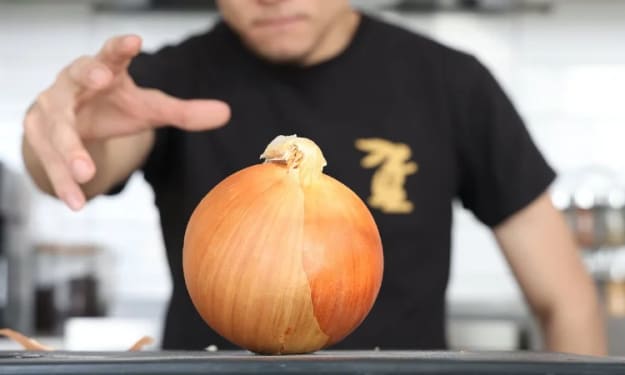"The Care Aims Model": A Speech Therapist's Approach to Swallowing Difficulties (dysphagia) after Stroke
An essay of my Masters' degree.

Dysphagia is a common morbidity in the event of stroke (Cohen et al, 2016; González-Fernández et al., 2014; SIGN, 2010; Teasell et al., 2018) and while most cases resolve within the first fortnight (Cohen et al, 2016; Groher and Crary, 2016; González-Fernández et al., 2014; Langdon, Jardine and Cichero, 2013), persisting dysphagia can significantly impact the patient’s quality of life and increase chances of developing other more serious infections (Langdon, Jardine and Cichero, 2013; Martino et al., 2005; SIGN, 2014). The Care Aims model (Malcomess, 2005) provides clinicians with a structure to guide their practice and details of individual roles can be systematically adapted to each care aim. Through the hypothetical case of 'John', this essay will attempt to examine the role of the speech and language therapist (SLT) in dysphagia management against elements of this model.
John is a 78 year old gentleman with no close family. He is currently on a stroke unit following a left hemisphere cortical stroke 24 hours ago. He has been made nil by mouth following nurse assessment and referred to the Speech and Language Therapy team; he is conscious and has functional communication. John has been independent prior to his admission and states that he wishes to eat, drink and go home.
Following the nurse’s screener that determined John nil by mouth (Dworzynski et al., 2013; SIGN, 2010), the SLT’s role must exercise the care aim of Investigation and assess whether dysphagia is present after his left hemisphere cortical stroke (Malcomess, 2005; RCSLT, 2019). The left-hemisphere has responsibilities in language, swallowing and in movement and sensation on the right side of the body (NHS, 2019; Robbins and Levine, 1988). Often details of stroke lesions are unavailable at the time of the dysphagia evaluation. Early assessment is therefore vital for identifying what the stroke has affected (Daniels, Huckabee & Gozdzikowska, 2019; Groher and Crary, 2016). By locating the damage early, ‘functional consequences’ can be ascertained (Crary and Groher, 2003) and the SLT is able to judge how John may be impacted and measure short-term challenges and successes (Groher and Crary, 2016; Malcomess, 2005; NICE, 2019). John will also no doubt be frightened so this care aim also begins to answer what his stroke means for him (NICE, 2019).
The SLT conducts an oromotor examination to determine the safety of John’s swallow (Cohen et al., 2016; González-Fernández et al., 2014). According to Daniels, Huckabee and Gozdzikowska (2019), this would typically consist of a ‘patient interview, observation of gross motor skills, inspection of the mouth (oral cavity), cranial nerve evaluation, and a swallow test which the SLT observes the patient’s swallow process. This would typically begin with water and then incorporate thickeners and multiple volumes depending on how the patient responds (Daniels, Huckabee and Gozdzikowska; 2019). John shows motivation to eat, drink and go home which suggests his cooperation during this process but potentially his frustration as he comes to identify things he may no longer be able to do as easily. John will need to be assessed and reviewed frequently and the staff around him must be aware of any sudden differences in his behaviour or worsening of symptoms. Such changes might indicate a stroke extension (Langdon, Jardine and Cichero, 2013).
Throughout the examination, the SLT will be combining what they can take from John’s medical records and case history with their own observations (Daniels, Huckabee and Gozdzikowska, 2019). General observations might include John’s weight or presence of odours (Langdon, Jardine and Cichero, 2013), as well as suggestions of cranial nerve damage, such as asymmetrical features, drooling, or slouching on one side (Crary and Groher, 2003; Langdon, Jardine and Cichero, 2013). The SLT will also informally evaluate John’s alertness, communication, voice and cognition as these may significantly affect both how much of the examination can be completed and the chosen course of treatment (Daniels, Huckabee & Gozdzikowska, 2019; Langdon, Jardine and Cichero, 2013).
These observations would occur alongside a cranial nerve assessment such as the Mann Assessment of Swallowing Ability (MASA), which its creator (Mann, 2002) deems to be a ‘reliable and valid tool’ that can be administered at bedside. A study by Antonios et al. (2010) supported these statements and concluded the MASA to be an effective instrument for dysphagia, commenting on its reliability. The SLT may feel it necessary to also use an instrumental tool, such as a videofluoroscopy (VF), if John’s dysphagia doesn’t improve in the days post-stroke (Landon, Jardine and Cichero, 2013). Many studies support the efficiency of VFs as a diagnostic tool for dysphagia (García Romero et al., 2018; Kim et al., 2018), with Rugiu (2007) even referring to it as ‘the gold standard’, offering practitioners a kind of clarity that a bedside examination might not. However, Rugiu also states the attributes of Fibreoptic Endoscopic Evaluation of Swallowing (FEES) and argues that while FEES is a more invasive procedure, the patient isn’t exposed to radiation. Aslam and Faezi (2013) argue however that a VF study should take place first, particularly if oropharyngeal dysphagia is suspected, as it provides insight into the bolus formation and the biomechanics of the swallowing process (Daniels, Huckabee & Gozdzikowska, 2019). It could also act as an ‘anatomic road map’ (Aslam an Faezi, 2013) should the SLT feel it necessary to conduct a FEES later. Considering John’s age, the less invasive VF may be a better suited procedure to start with. However, Daniels, Huckabee & Gozdzikowska (2019) advise clinicians to be wary that VFs don’t provide ‘all the diagnostic information needed to fully understand that nature of swallowing physiology’.
Once dysphagia has been confirmed, the SLT can begin to execute Participation. This care aim, also known as ‘enabling’ (Malcomess, 2005), is paramount to helping John increase his function as he learns to manage his diagnosis in his wider life (Malcomess, 2005; NICE, 2012). This care aim will support John adapt to potential lifestyle changes. As his condition changes so must his treatment options. Surrounding staff must be aware of all available options so that John receives the treatment best suited for him, whether that be medical, surgical or behavioural (Daniels, Huckabee & Gozdzikowska, 2019). For the purpose of exploring Participation, it will be assumed that the results of John’s assessment indicate pharyngeal difficulties and other weakness on his right side, suggesting that several cranial nerves are impaired (Langdon, Jardine and Cichero, 2013; Peate and Nair, 2017).
The SLT’s recommendations may begin with modifying John’s diet using thickeners or purées (Garcia and Chambers, 2010; Langdon, Jardine and Cichero, 2013). These softer textures are easier to manipulate into a ball ready for swallowing (a bolus), and slow down the overall swallowing process, aiming to reduce the risk of food going into the lungs (aspiration) (Kollmeier and Keenaghan, 2019). Despite this practice being the norm (SIGN, 2010), O’Keeffe (2018) argues that little evidence categorically concludes that modified diets actually decrease chances of aspiration and while states that the practice should not ‘be abandoned’ (O’Keefe, 2018), clinicians must take careful consideration before recommending it to patients due to its impact on quality of life. As John wishes to eat and drink, he might even decide to ignore such recommendations despite the aspiration risk, so to maintain a quality of life. Supporting this, a study by Lim et al. (2016) investigated the negative opinions of patients and professional alike have on how long-term use of modified diets could affect quality of life, and supported the notion that, in giving this recommendation, the patients’ taste and dietary preferences must also be considered (Langdon, Jardine and Cichero, 2013). In addition, the SLT may also recommended John partake in 'oral motor exercises' (Daniels, Huckabee & Gozdzikowska, 2019). These aim to strengthen the muscles involved in swallowing in hope of rehabilitating as much function as possible (Langmore and Pisegna, 2015). With this in mind, Langmore and Pisegna (2015) suggest that more research is needed to determine the efficacy such exercises have in improving dysphagia. They suggest that the success might highly depend on the location and severity of the stroke (2015). John’s cognition would have to be evaluated first for this to be considered.
Beyond this direct therapeutic support, the SLT may want to take a compensatory approach to treatment (Rogus-Pulia and Connor, 2016) and liaise with the multidisciplinary team (MDT) with regards to John’s other needs (Dworzynski et al., 2013). As well as requiring support from a dietician (The British Dietetic Association, 2017), a physiotherapist and potentially an occupational therapist (NHS, 2018; Boczko and Feightner, 2007) for his nutritional and mobility needs, as an elderly gentleman living alone with no nearby family, he may require support from a social worker with regards to putting in place assistance packages for day to day living (Dowswell et al., 2000). A referral to mental health may also support him if he struggles accepting losing his independence (Ghose, Williams and Swindle, 2005). Another key aspect to consider is how though John’s communication is functional now, it could alter should a stroke extension occur (Langdon, Jardine and Cichero, 2013) and therefore must be closely monitored.
To conclude, the Care Aims model offers a methodical way to consider the process of treating someone like John post-stroke. From the point of the SLT, the care aims of Investigation and Participation can be adapted to accommodate the complex processes of assessment and intervention. For John, both these care aims are vital for ensuring his treatment is both well suited and practical as he learns to manage the effects of his stroke away from the medical environment.
About the Creator
Louisa Jane
British.
Paediatric speech and language therpaist.
Art enthusiast.
Amateur-dramatics amateur.
Francophile.
Traveller.
People person.
Of the general happy-go-lucky sort :)






Comments
There are no comments for this story
Be the first to respond and start the conversation.